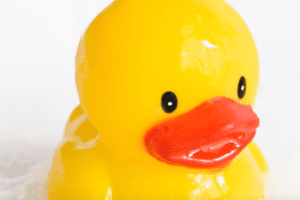
Some Toys Containing Phthalates Hazards. Some provisions in the recently enacted Consumer Product Safety Improvement Act of 2008 include a phthalates ban on children’s products, new lead limits, tougher manufacturing standards for all-terrain vehicles, and product safety testing prior to sale. A database about product complaints will be available to consumers and safety standards violators could […]

Some Toys Containing Phthalates Hazards. Some provisions in the recently enacted Consumer Product Safety Improvement Act of 2008 include a phthalates ban on children’s products, new lead limits, tougher manufacturing standards for all-terrain vehicles, and product safety testing prior to sale. A database about product complaints will be available to consumers and safety standards violators could face increased civil penalties. Unfortunately, the phthalate restriction does not take effect until next year, so current toys may still contain the dangerous chemicals and will also likely be sold this holiday season. Phthalates are chemical additives that make hard plastics flexible.
Store owner Craig Wolfe—who does not believe phthalates cause danger—is focusing on selling and not destroying his inventory of 25,000 rubber ducks. “We’ve never had any problems,” he says. Certainly he is not alone. Consumer advocates are concerned that the ban’s timing—it goes into effect February 10, 2009, after this year’s holiday season—has inadvertently created a grace period in which toy makers can sell the soon-to-be-banned toys at discounts, as opposed to disposing them. “This holiday season is going to be ‘buyer beware,'” says Elizabeth Hitchcock of the U.S. Public Interest Research Group. Consumers will see “toys marked down at a discount without knowing that they contain a substance that will be banned in February,” says Hitchcock. That could “present a tremendous danger,” she says, because the lower prices will be all the more appealing to shoppers during an economic downturn. “The effective date was meant to give the Consumer Product Safety Commission (CPSC) time to implement its new mandates, not to encourage fire sales in toy stores across the country,” says Representative Janice Schakowsky (Democrat-Illinois).
The ban prohibits three phthalates; three others will be temporarily banned from childcare products and toys that children can place in their mouths. Once effective, the ban may be difficult to enforce because although Consumer Product Safety Commission (CPSC) can act on violators, it would be virtually impossible for it to check every product in every store. And, while some retailers will be more compliant than others, because a toy’s ingredients are not labeled, merchants—even those who agree with the ban—might face difficulties maintaining compliancy.
Scientific evidence pointing out the dangers of phthalates continues to increase says Shanna H. Swan, University of Rochester School of Medicine and Dentistry epidemiologist. Dr. Swan has studied phthalates for over a decade and estimates that there are nearly 100 studies that reveal reproductive toxicity, dubbed the “phthalate syndrome.” First evident in rodents, Dr. Swan says the syndrome is present in humans. A recent study in Denmark correlated phthalates found in a mother’s milk to decreased testosterone levels in male babies and researchers have found phthalates present in infant urine. Dr. Swan’s own research found a relationship between phthalates in infant males and smaller genitalia, pointing to dangers that the government’s own past research never detected.
In its latest act, Congress ordered the CPSC to appoint a Chronic Hazard Advisory Panel to review the effects of all phthalates and phthalate alternatives particularly on children and pregnant women; however, an opinion from that research is not expected for years.
The personal injury attorneys at Parker Waichman LLP offer free, no-obligation case evaluations. For more information, fill out our online contact form or call 1-800-YOURLAWYER (1-800-968-7529).


